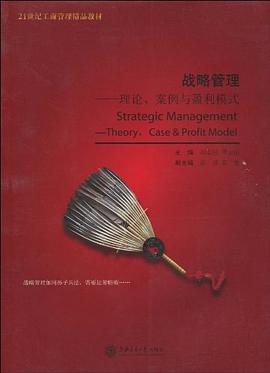

具体描述
《动词短语结构研究》在生成语法的框架内探讨动词短语的结构。全书共分五章:第一章是导论,主要介绍理论背景;第二章是有关并合(conflation)和复合(conpounding)的文献综述;第三章围绕并合和复合探讨跨语言的较简单的动词短语结构;第四章分析较复杂的动词短语结构;第五章是结束语。《动词短语结构研究》试图在以下几方面抛砖引玉:引进“分布式形态学”等西方生成语言学新理论,分析包括汉语的跨语言语料,对汉语的一些“特殊”语法现象作出非特殊解释;立足汉语语料,对国外新理论进行补充和完善;引起国内语言学界对乔姆基学派内部非乔式本人的理论的重视。
《动词短语结构研究》适合语言研究者、高校语言文学类专业师生以及语言爱好者等对语言学感兴趣的读者阅读。
作者简介
目录信息
1 Introduction
1.1 Theoretical Background
1.1.1 Argument Structure: An Overview
1.1.2 A Brief Introduction to Distributed Morphology
1.2 A Presentation of This Books Theoretical Ideas
1.3 Structure of This Book
2 Conflation and Compounding: An Overview
2.1 Conflation
2.1.1 Conflation in Talmys Lexicalization Theory
2.1.2 Conflation in Hale and Keysers Theory
2.1.3 Conflation in Mateus Theory
2.1.4 Conflation in McIntyres Theory
2.1.5 Summary of This Section
2.2 Compounding
2.2.1 Languages Allowing or Banning Root Serialization in Verbs
2.2.2 Previous Analyses of Root Serialization in Verbs
2.3 Conflation and Compounding in the Formation of a New Theory
3 The Interaction between Conflation and Compounding
3.1 A Close Look at Root Compounding in Verbs
3.1.1 Overt Root Serialization
3.1.2 Overt/Covert Root Compounding in Verbs
3.1.3 Root Serialization and Root Compounding
3.1.4 Chinese Compound Verbs
3.1.5 Summary of This Section
3.2 A Closer Look at Conflation
3.2.1 Motion Sentences
3.2.2 Deadjectival Verbs in English and Modern Chinese
3.2.3 The Nature of Conflation and Compounding
3.3 Causer and the Direct Object Restriction
3.4 Interpretation of Compound Verbs in Chinese Causatives
3.5 The Absence of Post-verb Prepositions in Modern Chinese
3.6 Summary of This Chapter
4 Conflation, Compounding, and Sentences with Complex Verb Phrases
4.1 The Double Object Construction
4.1.1 Properties of the Double Object Construction
4.1.2 Harleys Analysis of the Double Object Construction
4.1.3 Advantages of Harleys Analysis
4.1.4 Pylkkainen/Cuervos Analysis of the DOC
4.1.5 Double Object Sentences in Modern Chinese
4.1.6 A New Approach
4.1.7 Summary of This Section
4.2 Non-core Arguments in Causative and Inchoative Sentences
4.2.1 Extra Arguments in Causatives and Inchoatives
4.2.2 Previous Analyses of Sentences with Non-core Arguments
4.2.3 Problems with These Views
4.2.4 PSPO Sentences in Other Languages
4.2.5 The Structure of Sentences with Extra Arguments
4.2.6 Summary of This Section
4.3 Location and Locatum Sentences in English and Chinese
4.4 Conclusion
5 Concluding Remarks
Bibliography
后记
· · · · · · (收起)
1.1 Theoretical Background
1.1.1 Argument Structure: An Overview
1.1.2 A Brief Introduction to Distributed Morphology
1.2 A Presentation of This Books Theoretical Ideas
1.3 Structure of This Book
2 Conflation and Compounding: An Overview
2.1 Conflation
2.1.1 Conflation in Talmys Lexicalization Theory
2.1.2 Conflation in Hale and Keysers Theory
2.1.3 Conflation in Mateus Theory
2.1.4 Conflation in McIntyres Theory
2.1.5 Summary of This Section
2.2 Compounding
2.2.1 Languages Allowing or Banning Root Serialization in Verbs
2.2.2 Previous Analyses of Root Serialization in Verbs
2.3 Conflation and Compounding in the Formation of a New Theory
3 The Interaction between Conflation and Compounding
3.1 A Close Look at Root Compounding in Verbs
3.1.1 Overt Root Serialization
3.1.2 Overt/Covert Root Compounding in Verbs
3.1.3 Root Serialization and Root Compounding
3.1.4 Chinese Compound Verbs
3.1.5 Summary of This Section
3.2 A Closer Look at Conflation
3.2.1 Motion Sentences
3.2.2 Deadjectival Verbs in English and Modern Chinese
3.2.3 The Nature of Conflation and Compounding
3.3 Causer and the Direct Object Restriction
3.4 Interpretation of Compound Verbs in Chinese Causatives
3.5 The Absence of Post-verb Prepositions in Modern Chinese
3.6 Summary of This Chapter
4 Conflation, Compounding, and Sentences with Complex Verb Phrases
4.1 The Double Object Construction
4.1.1 Properties of the Double Object Construction
4.1.2 Harleys Analysis of the Double Object Construction
4.1.3 Advantages of Harleys Analysis
4.1.4 Pylkkainen/Cuervos Analysis of the DOC
4.1.5 Double Object Sentences in Modern Chinese
4.1.6 A New Approach
4.1.7 Summary of This Section
4.2 Non-core Arguments in Causative and Inchoative Sentences
4.2.1 Extra Arguments in Causatives and Inchoatives
4.2.2 Previous Analyses of Sentences with Non-core Arguments
4.2.3 Problems with These Views
4.2.4 PSPO Sentences in Other Languages
4.2.5 The Structure of Sentences with Extra Arguments
4.2.6 Summary of This Section
4.3 Location and Locatum Sentences in English and Chinese
4.4 Conclusion
5 Concluding Remarks
Bibliography
后记
· · · · · · (收起)
读后感
评分
评分
评分
评分
评分
用户评价
评分
评分
评分
评分
评分
相关图书
本站所有内容均为互联网搜索引擎提供的公开搜索信息,本站不存储任何数据与内容,任何内容与数据均与本站无关,如有需要请联系相关搜索引擎包括但不限于百度,google,bing,sogou 等
© 2025 book.quotespace.org All Rights Reserved. 小美书屋 版权所有




















